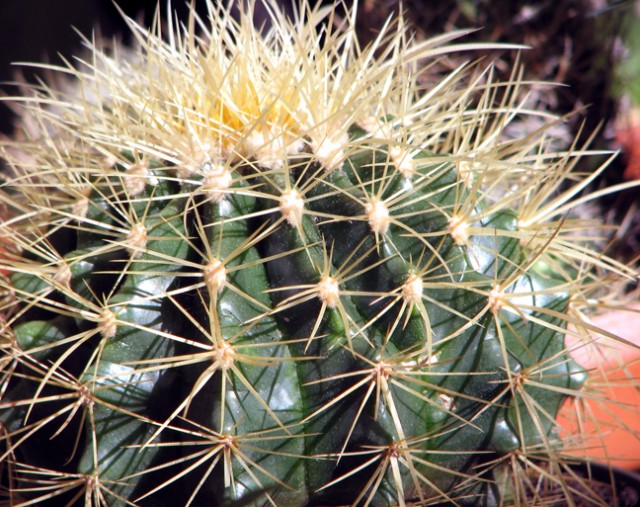xerophytes
BIOGEOGRAPHERS AND ecologists usually classify plants according to their water needs. Since the global distribution of water varies from dry to wet, plants also vary in their adaptation to the availability of water. Xerophytes are plants of the arid regions. The Greek prefix xero- means dry in contrast to hygro- (wet) and meso- (intermediate).
Xerophytes as a class of plants are those that have adapted to dry environments by some mechanism to prevent water loss or to store water in their leaves. While most xerophytes are found in arid environments, some xerophyte plants may also be found in salt marshes, saline soil, or in acid bogs. These xerophytes have adapted to chemically hostile, wet environments. Other xerophytes can be found on beaches, in sand dunes, and on bare rock surfaces even in wet regions where local conditions made some spot dry.

Xerophytes have adapted to arid conditions by storing water in leaves or in stems. They have reduced the rate of water transpiration to a bare minimum. Consequently, they can survive in habitats that dry very quickly because of high temperatures and wind that favor a high rate of transpiration. Many plants in the Mediterranean region used xerophytic adaptations to meet the challenge of the summer dryness. Some, like the live oak, have hard, thick, leathery leaves.
Succulents are plants that store water in their leaves. These plants have leaves that are thickened by a spongy tissue that can absorb water. Agaves and cacti have thick, fleshy stems or leaves. Other xerophytes have waxy leaf coatings or the ability to drop leaves during dry periods. Others have the ability to reposition or fold leaves to reduce sunlight exposure. Others can grow dense, hairy leaf coverings.
Many succulents do not have spines like cacti. Some, such as sedum, come from colder areas. Sedum varieties come from many parts of the world. Important succulents are agave, aloe, crassula, echeveria, hoya, kalanchoe, sempervivum, and yucca.
Cacti are also xerophyte plants that are members of the rose family. They are among the most droughtresistant plants. With water drawn from shallow roots and stored in their stems, they are able to survive long periods without water. The needles on cacti give shade while waxy surfaces seal in moisture. Some xerophytes are members of the spurge family, which contains over 7,300 species, many of which are herbs and shrubs. Some spurge species in Africa are hard to distinguish from cacti when not in bloom.
The American Southwest, which includes the SONORAN DESERT, the Chihuahuan Desert, the Mojave Desert, and the Great Basin Desert, are habitats for a rich variety of xerophytes including cacti. These plants probably originated in the West Indies. Today, there are hundreds of varieties, including the yucca, prickly pear cactus, the beavertail cactus, and jumping cholla. The plants in each of these deserts varies richly: Some varieties can dominate in one desert but be absent or rare in another. Ranchers in the Southwest see the prickly pear as money in the bank because in times of severe drought, the spines may be burned off with a flame thrower. The cattle can then eat the moisture-filled leaves.
The GRAND CANYON in the UNITED STATES has hygrophytes at the bottom. With increases in elevation, the moisture decreases and the plants change from mesophytes to xerophytes at the desert plateau at the top of the canyon. There are numerous cacti present, along with agave and yucca.
In the deserts of IDAHO and OREGON, xerophytes can be found. The hedgehog cactus, which grows in the high desert, has numerous light-colored spines that help protect the plant by reflecting sunlight. Its thick and rounded shape also helps it retain water because the shape heats more slowly.
In some deserts, like the KALAHARI, the vegetation is xerophytic, but the plants are not true xerophytes. Other deserts with numerous species of xerophytes are those in southern Africa and on the island of MADAGASCAR. Many xerophytes can be found in the deserts of the MIDDLE EAST, BRAZIL, and CHINA.